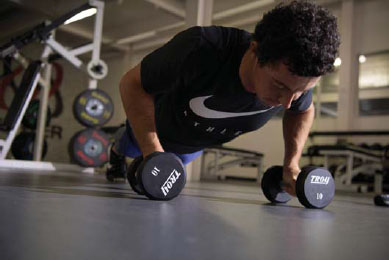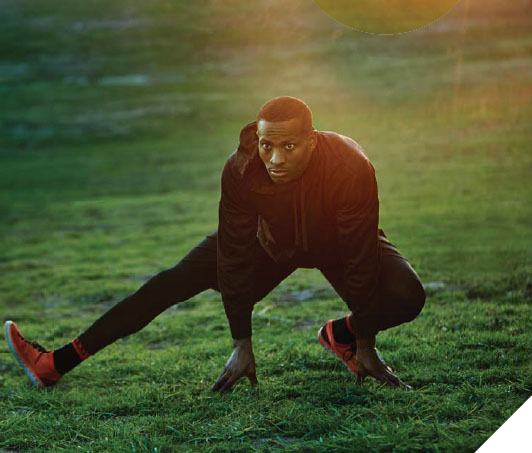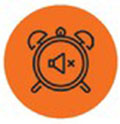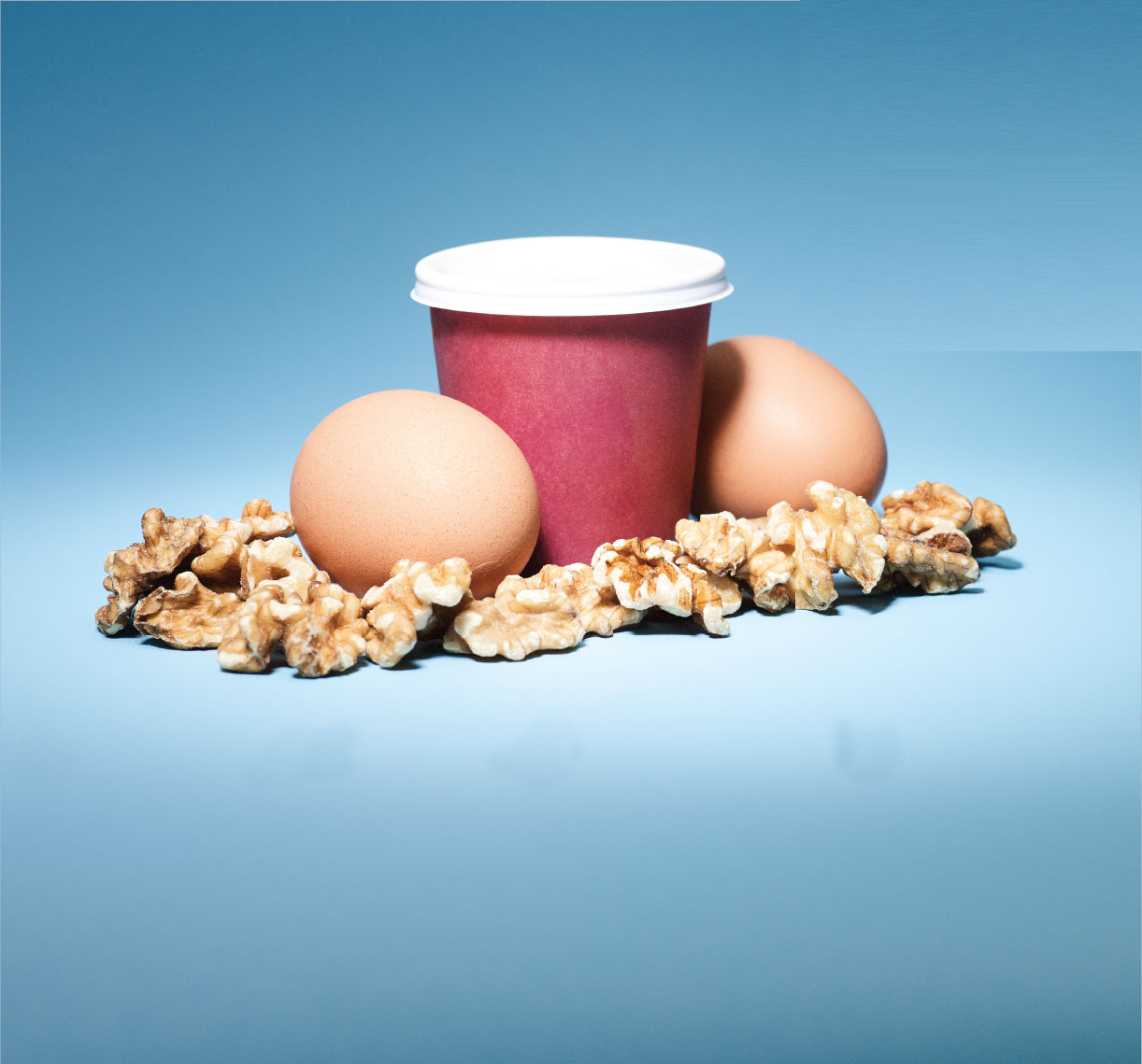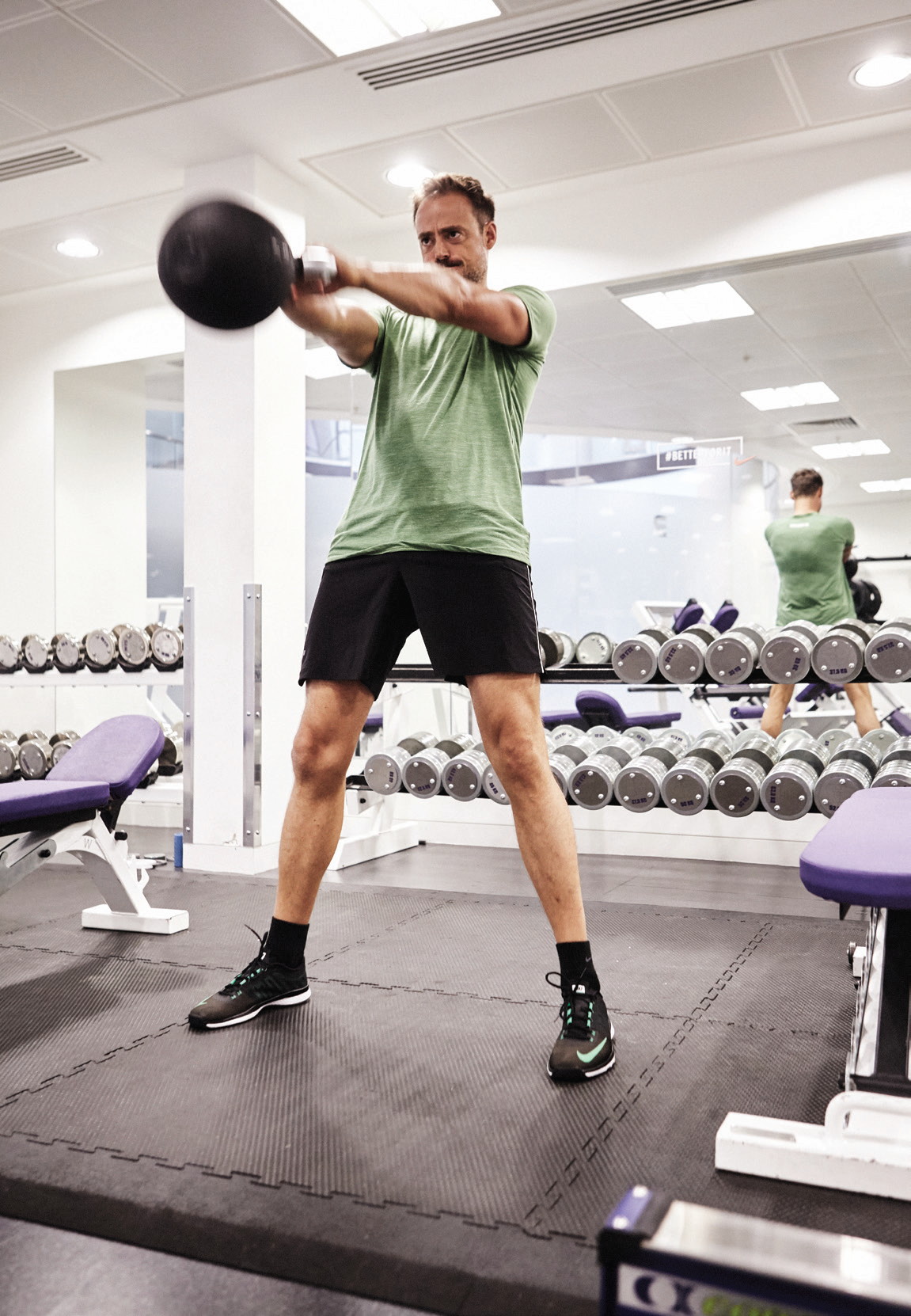Over 32 weeks and 21 races, a new champion will be forged and a new era of racing complete with halo will have commenced. As we explain over the next 14 pages there will be triumphs and tears, scandals and sensations but for now every team and every driver is waiting for just one thing…
…lights out
World champion shakedown
Mercedes dominated 2017 and is tipped to do so again this season with its powerful triumvirate of driver, team boss and technical director. We caught up with each of them in turn
Toto Wolff
Mercedes AMG F1’s team principal
How do you expect the Hamilton/Bottas partnership to evolve?
“You never think a relationship between team-mates will always be harmonious, but in year one there was definitely something of a honeymoon period – and it helped that there was lots of respect between them. There was no previous baggage, either, unlike Lewis and Nico. I’m not expecting it always to be easy, because that simply isn’t part of any racing driver’s DNA, but it was in 2017.”
How do you retain competitive motivation after four straight world titles?
“I think you remain energised so long as you are passionate about what you do. This is a fundamental, essential mindset. If one day I were to lose my passion for F1, or developing the team, then perhaps I’d question whether I was in the right position. But I really enjoy being part of the team, the changing environment, the fluctuating regulations, new competitors coming in, upping your game… Every year is different. You can reset your objectives and enter every season with the right motivation.”
And what are this year’s objectives?
“We want to maintain the momentum we built in 2017. We want to stabilise the things that functioned well last year, then work on any weak areas in the car and the organisation to make them better. F1 is so competitive that you cannot take it for granted that you’ll always be fighting for championships.”
If you had to write a school report after Liberty’s first season, what would it say? Shows great promise? Must try harder..?
“Ask me in 12 months! I’d like to give them more time. They’ve stepped into the big boots of an iconic, old-fashioned entrepreneur and I wouldn’t want to judge them just yet.”
How do you assess Lewis Hamilton’s statusin the pantheon of Formula 1?
“The statistics show that he’s among the greatest Formula 1 drivers of all time – that’s a fact. In terms of records he has beaten some and might yet beat others, but it’s best to recognise the greats once they’ve called it a day, that’s the moment to sum it all up. He’s already part of a group of the very best F1 drivers, but he can achieve even more.”
Do you worry at all about the future? F1 increased its digital activities last year, which wasn’t difficult…
“They were previously zero!”
…but TV viewing figures continue to drop in some traditional heartlands.
“I think there are worrying signs for every sport because of the changing media landscape. Traditional TV is losing importance – people use multiple screens, watching on-demand – and it’s a challenge that has to be tackled in the right way. That is the biggest factor. It’s a fair enough strategy to move TV behind a paywall to generate revenue, but then you have to be able to cope with a shrinking audiences.”
Who do you regard as the most likely opposition this year?
“If you are realistic it will be the usual suspects, Ferrari and Red Bull, but there is a fine line between realism and arrogance – and it would be arrogant to write off all the others. Renault, McLaren, Williams and Force India are candidates to surprise at times. My mindset at the start of the campaign is to take everybody seriously.”
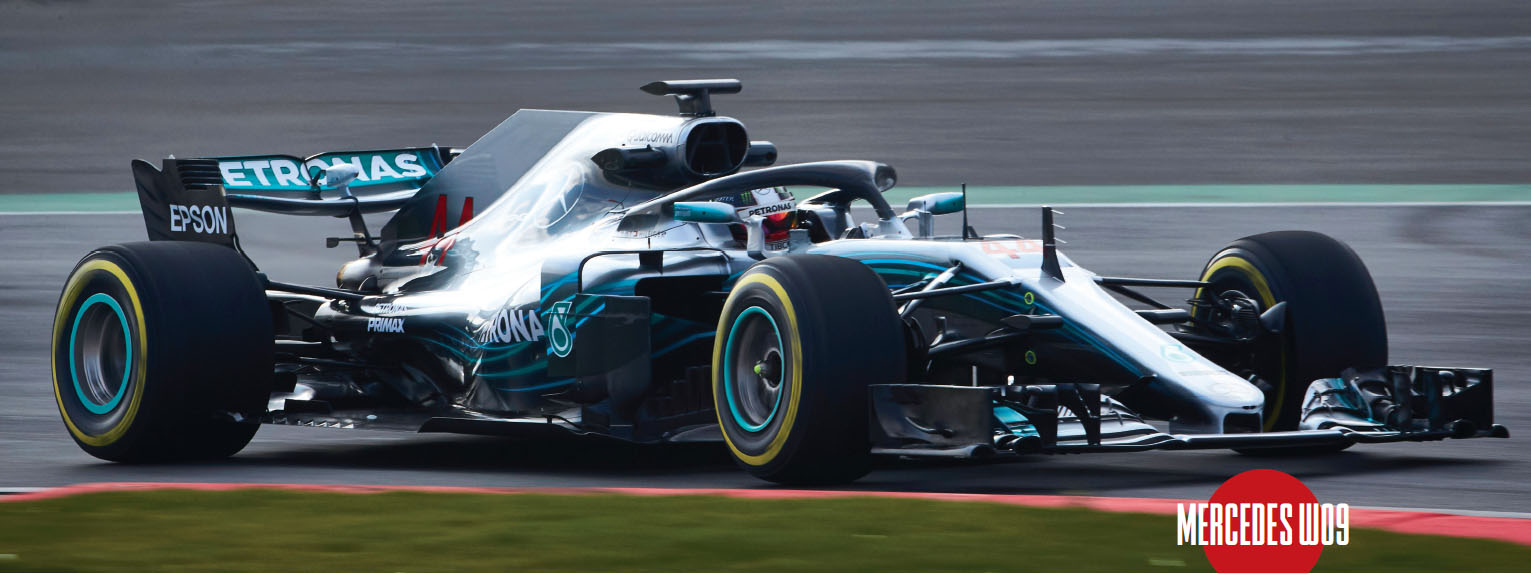
How much effect h
as the halo had?
“The biggest job was trying to make sure that it fitted nicely on the chassis, that the chassis was strong enough to take the loads and that we saved enough weight – that’s where the effort has been. The increased centre of gravity has an effect on lap time, but that’s the same for everybody.”
Last year was your first with Lewis Hamilton. What were your impressions?
“He surprised me from the outset. At our first test together, he’d just finished a run during which he’d had quite a big moment. By way of saying ‘hello’ he asked whether I’d seen what happened. You generally coo a bit at drivers for being super-brave, but I didn’t want my first conversation with Lewis to be like that, so I chose what I thought was a well-calibrated middle ground and said, ‘Yeah, but the thing that always surprises me about you fuckers is that you come back the next lap and do it all over again.’ I thought that would be mildly funny, but I could see that Lewis didn’t receive it in the way it was meant. A bit later Toto Wolff came up and said, ‘Lewis mentioned that you were a bit rude to him…’
“I later sat down with Lewis in the factory canteen. I apologised, told him I never swear when I’m cross but that I did it because it mildly amuses me and that I’d tone it down in future. He laughed, told me not to worry and that I’d just caught him a bit off-guard.
“He then caught me off my guard by telling me how sorry he’d been to hear about my wife [Becky Allison succumbed to meningitis in 2016]. He added that from what people had told him, the sadness never leaves but over time things would become easier and I’d learn to live with that sadness. I absolutely wasn’t expecting this. We see the public face of Lewis – the Tweets, the fashion – but this was a mature, sensitive, confident conversation. He said he hoped I’d be lucky and find happiness again. I thanked him but mentioned that any such happiness would probably involve having to speak to a girl – and I was really crap at that. He laughed and said, ‘Well, maybe just don’t call them fuckers…’ That, I think, gives you a much better sense of what he’s like than anything I could tell you about his work ethic, his driving or his determination.”
How impressed were you by Valtteri Bottas?
“I think all of us in the team are far more impressed with him than appears to be the perceived wisdom. He finished not too many points behind Sebastian Vettel – and without a DNF, which wasn’t of his making, he’d have been ahead. If you take away that DNF, he’d have been on average about two points a race worse off than Lewis – two points for which Valtteri would not excuse himself, but let’s remember who he’s up against. Lewis is one of the all-time greats – and for Valtteri things will only get better this year. I’m confident he’ll go from strength to strength.”
James Allison
Mercedes AMG F1’s technical director
Lewis Hamilton
World champion 2008, 2014, 2015, 2017

What’s been
yourrole in the development of the new car?
“I’m not in the engineers’ office, I’m not designing – my job is to explain weaknesses and put that into a feeling, and into words. Our role is taking what we’ve got then taking it to the limit. The numbers could be perfect, even in simulations, but the simulator doesn’t give you the same sensations as driving around the circuit. We have in-depth debriefs and those sessions have been very useful in the development of the new car. Only Valtteri and I speak in those sessions, so they have been very useful.”
What issues have you addressed?
“There’s a different aerodynamic characteristic from last year. Hopefully we’ve found a compromise that will favour the majority of circuits. Some of the ride and roll issues we have, some floor characteristics, will hopefully be improved a lot, too. But everything is new. The suspension is new. The car will be quicker this year.”
Are you
expecting tougher competition this season?
“Yes. When Red Bull turned up last year it had no furniture [aero bodywork], so development was very steep but the team finished very strongly. Ferrari, Mercedes and Red Bull ended last year very similar, so coming into this year I think you’ll see a tougher battle. Maybe there’ll be another team too, maybe McLaren.”
What can we expect from your
team-matethis year?
“This is the first evolution of last year’s car, so Valtteri will sit in the same seat, have the same controls and none of the learning will need to be done. So that means he’s already comfortable. It’s a car we both developed through last year. It’s our driving DNA fused into one. I hope he’s more comfortable. It’s not moved away from me, I’ll be on top of that.”
2018: The key questions
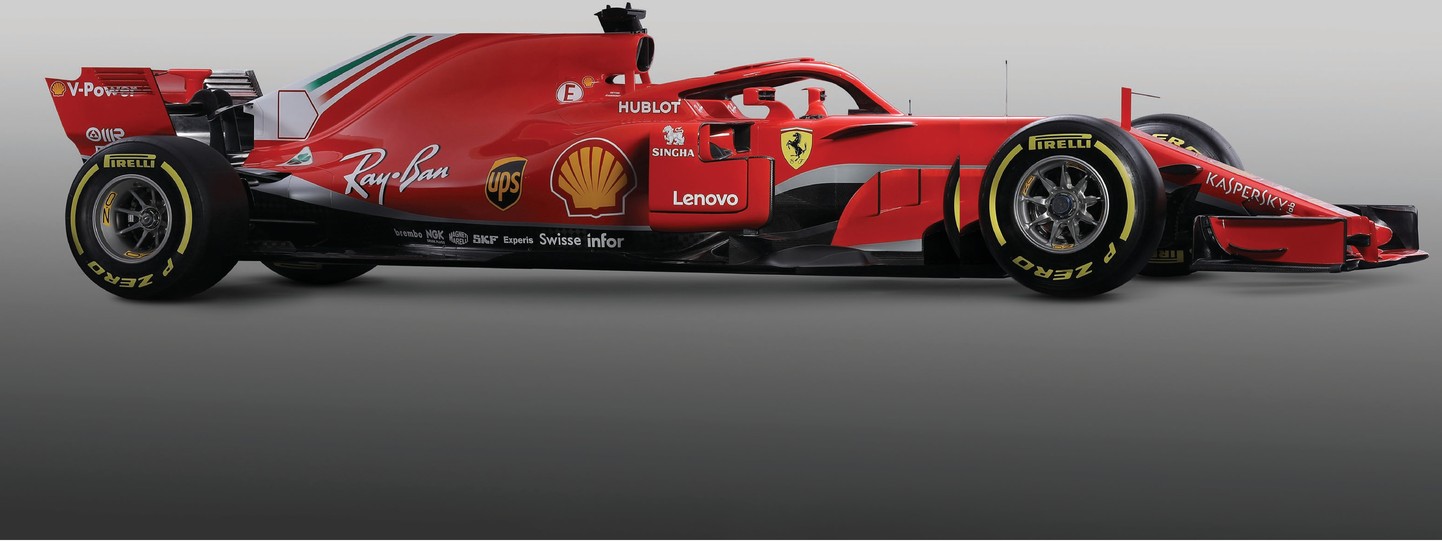
How will the season play out? Here we tackle the big points of contention that will provide the answer
WRITER Mark Hughes
Will we ever get used to the halo?
Philosophically, the halo is a big thing. It’s more than just the latest feature of a safety improvement programme that has been ongoing since the ’70s. Unlike crash-worthy carbon fibre monocoques, self-sealing fuel connections, better crash helmets, deformable structures and HANS devices, the halo is a visual intrusion into the fan’s romantic notion of what the essence of motor racing is. It is an ugly, jarring reminder that cannot even try to hide its imposition upon those values. There is probably only one way it might quickly be forgotten: through a fantastically competitive season. So…
Is another Mercedes walkover inevitable?
Hell, no. And those aren’t merely the words of an optimist. Consider: last year Mercedes became the last not to follow the high-rake aero concept that Red Bull introduced years ago. It did so because it believed it had a technology – a heave spring with asymmetric valving – that would allow it to get much of the advantage of high rake but without having to start afresh with a completely new aero philosophy. That technology was banned on the eve of last season, contributing to the
‘diva’ temperament of the W08. If the Mercedes aero department has accepted as inevitable that it must now pursue the high-rake route, it is starting at base camp with how all the various surfaces interact with each other. Whereas Ferrari has been on this path for a full season already. Mercedes’s aero department is arguably the best in the business so it’s not a done deal they won’t claw all that back – and maybe it has figured out yet another way of staying with low rake. But with the wider floors it seems inevitable that high rake is the way to go.
Furthermore, the 2017 Ferrari wasn’t merely a competitive car. It was the most ingenious and bold design on the grid, with more innovations, more nudging against the limits of the regulations, than any other car.
That was the first time this could be said of a Ferrari in more than a decade. It bore all the hallmarks of a re-engaged Rory Byrne. What more has he up his sleeve?
It’s believed the 2018 Ferrari will be slightly longer, the Mercedes a little shorter, so converging towards each other in the second year of these regulations. Which implies that Ferrari feels it can afford to gain more downforce (from a bigger underfloor) and reduce drag with a slightly longer wheelbase, but still retain enough ballast to enjoy full flexibility on the weight distribution range – a key part of its wide operating band last season.
Part of the weight calculation will include the halo and its associated structural mounting. Although the minimum weight limit has been increased by 6kg, the total weight is more like 14-15kg, making it yet-tougher to get down to the limit. This will define how far Ferrari has been able to go with lengthening its car – and will have pushed Mercedes further in the direction of shortening theirs.
Can Renault give Red Bull enough?
There is talk from both the Mercedes and Ferrari camps that 1000bhp has been breached by their 2018-spec power units on the dynos. Renault Sport last year struggled to keep up and will need to find not only the deficit from then but also the gains made by those two rivals. How feasible is that? Renault’s performance in the hybrid formula it craved has been extremely disappointing, but Christian Horner frequently states that if Renault can just get to within a couple of tenths of the Merc engine – rather than between 0.5-0.8sec as it was last year – then Red Bull is in the game.
There is realistic hope, actually. The engine will be a continuation of the all-new concept of 2017, but hopefully without the limitation of an inadequate MGU-H. The theory is that the potential of last year’s new concept engine was thwarted because the MGU-H could not reliably run at the shaft speeds required to maximise the new turbo and the combustion chamber that had been optimised around a much faster-running turbo. The complex turbo-compound loop of these engines means that even a slight problem within that loop compounds to severely limit the power. Despite a smaller turbo than either the Mercedes or Ferrari, limited by that
MGU-H, it was said last year to be running only at 100,000rpm, about 20,000rpm down and therefore less efficient. In other words, the 2017 engine was essentially running detuned and there could be plenty of low-hanging performance fruit for Renault if it has sorted the MGU-H problem. Let’s see.
– A CHAMPION’S VIEW –
Sir Jackie Stewart
World champion 1969, 1971, 1973
– A CHAMPION’S VIEW
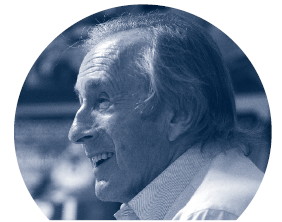
The thing that I, along with probably all racing enthusiasts, am looking forward to this year is seeing some closer racing. Whether we get it or not… well, we will have to wait and see.
I think the worst outcome would be another year of Mercedes dominance. You can’t blame Mercedes for that – they are just working within the rules, they want to be the best.
Also, you could argue that F1 has always had periods of dominance by a certain team, whether that was Ferrari with Michael Schumacher or Red Bull when they won four in a row. And historically there have been times when one team dominated, too, going right back to the Silver Arrows of the 1930s. So, in some ways it’s an unfair dream to want closer racing, but I think that is what the sport needs.
People will also be talking about the halo. I know some people say it is ugly but they said that about Colin Chapman’s wing cars! You have to have it.
I remember in the 1968 Indianapolis 500, I didn’t drive because I had hurt my wrist, but Mike Spence stood in and a wheel came off and hit him in the head. I visited him in hospital and there wasn’t a mark on his body but his head injury was fatal. We have to prevent injuries rather than treat them and the halo does that.
The key battle will be Lewis against Seb, although Red Bull has two very fine drivers, too. I see the Mercedes and Ferrari battle as being very technical and don’t know whether Ferrari has the team or the one person in the team – like a Schumacher or Ross Brawn character who the team can get around.
If you ask me who I am rooting for, it’s not that I don’t want Lewis to win a fifth title, but I think it would be positive for the sport and attendances around the world as well as television and electronic media for another team and driver to have a chance.
DREAM TEAM Wouldn’t it be wonderful to have a dream team of Hamilton, Vettel, Ricciardo, Verstappen and Alonso all driving the same cars with the same engine. Christian Horner as boss.
Sir Jackie Stewart is founder of Race Against Dementia. Visit
www.raceagainstdementia.com
If Renault can provide something close, things could get very tasty up front. In Max Verstappen, Lewis Hamilton seems to recognise the new pretender and is under no illusions about just how formidable he could be. “He’s [already] doing wonderful things and he’s just going to grow so much. It won’t be a problem. It’ll just be freakin’ tough. What a contest that could be! Even I would pay to see that!”
Red Bull vs McL
aren, identical engines. How does that pan out?
Regardless of how good the Renault power unit is, we still get to see a straight match-up
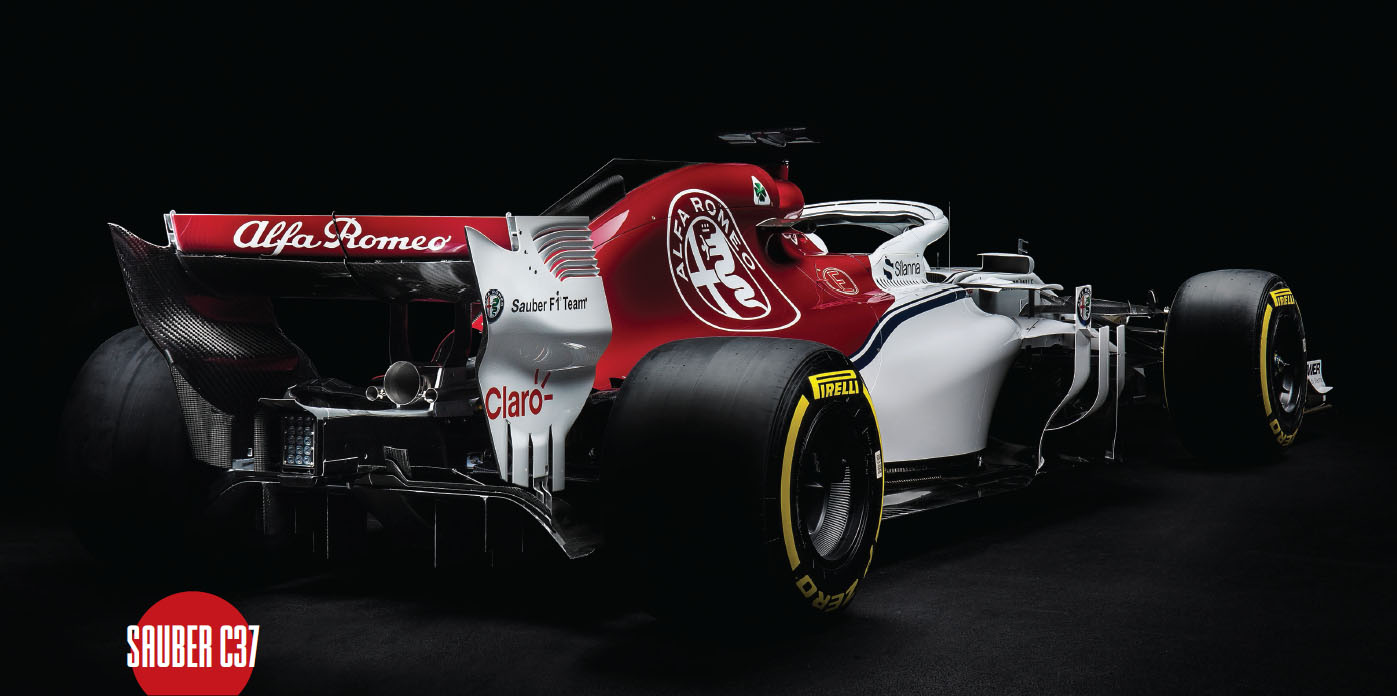
SAUBER C37 between Red Bull and the newly Renaultpowered McLaren. That in itself is utterly fascinating, especially given the respective driver line-ups.
Throughout their three-year Honda misery McLaren and Fernando Alonso were adamant they had one of the best chassis out there. Well, there can be no tougher yardstick than an identically-powered Red Bull. If the MCL33 measures up to the RB14, just think what a prospect we have: Alonso vs Verstappen vs Ricciardo – and with Vandoorne getting in on it too. The prospect of 21 races of that is pretty mouth-watering in itself.
Honda: this time, surely?
Has McLaren given up on Honda at just the wrong time? Having gone through the start-up agonies of the programme, has it baled out just as the rewards are about to come? If so, Toro Rosso – and ultimately probably Red Bull – gets to benefit.
The Mercedes-like architecture of the Honda engine as introduced last year remains, giving potential aero gains over the Renault layout. Power was limited last year by a vibration problem that imposed an artificial limit on the turbo’s speed, this further impacting upon the harvesting efficiency. As with Renault, if the basic root of the problem has been cured during the off-season, the gains in power could be dramatic.
A Toro Rosso flying by Alonso’s McLaren on the straight? That would surely generate some interesting radio messages…
Should Honda struggle for a fourth consecutive season it leaves the senior Red Bull team with potentially a very sticky problem in that 2018 is potentially the last year in which Renault Sport will supply them.
Renault: a giant awakening or just treading water?
The works Renault team’s progress last year was quite visible and it ended the season usually best of the rest after the big three. But to keep that rate of progress going is difficult with what team boss Cyril Abiteboul admits is about 85 per cent of the resource of Mercedes. Furthermore, it was easily able to outscore McLaren last year thanks to an engine advantage which – by courtesy of supplying McLaren – is no longer there. Last year’s car was around 1sec per lap slower than the identically-engined Red Bull. How much of that deficit can be clawed back with the RS18, the first Renault to be overseen by new aero chief Pierre Macin, ex-Red Bull? And where does that put it relative to McLaren?
Other than that, the chief interest here will be how the very intriguing Hülkenberg/Sainz driver line-up will compare over a season.
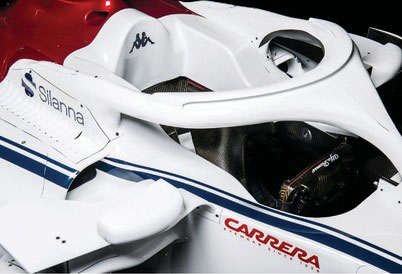
How will
thegre
ater tyre range affect the racing?
The idea of Pirelli offering a range of seven compounds, rather than five, is to discourage uniform one-stop strategies. It’s a band-aid to the overtaking problem, which is being researched ahead of the post-2020 aero regulations. Do more pit stops enhance the racing? Or just make it more confusing? Anyway, expect more two-stop races.
– A CHAMPION’S VIEW –
Mario Andretti
World champion 1978
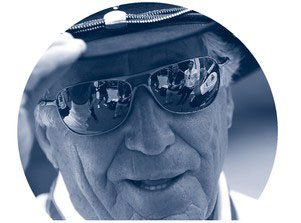
It’s always suspenseful as to who’s done the best work off-season, how the fight will go between the usual suspects. There will be a lot of eyes on McLaren and whether they’ve made the right move or not in going with Renault or whether Toro Rosso is going to benefit. That’s going to be fascinating.
One thing that does concern me is the new three-engine rule. What’s that going to look like mid-season and will it affect the ability to go all-out? The technical side is a big part of F1 but you have to balance it with the spectacle and I’m not sure they’ve got this right.
There’s a lot of hope for Ferrari being able to take it to Mercedes. Some mistakes were made there last year. Had it not been for them they could’ve been in the game right to the end. They had a lot of fight in them and I hope that continues. I have a lot of optimism that it’s going to be close.
Watching Fernando Alonso in a hopefully faster car is going to be great. He is such a racer. We’ve always known that, but his sheer energy in the fight with an uncompetitive car after all these years has added another dimension and we want to see him back contending.
Daniel Ricciardo has Max Verstappen to contend with at Red Bull. These sort of contests are great for us as fans. When you get a tough team-mate, as one stock goes up the other comes down. It’s a selfish business. Daniel’s ability is clear, his reliability as a racer is proven, but Max is still potentially the next superman and is full of surprises and so exciting.
Personally, I’m really pulling for Robert Kubica. Here’s a guy with so much heart. To come back after such injuries, to have fought his way back. He’s another extremely exciting talent and in his third driver role with Williams he has that chance to come back fully in 2019. It’s amazing where willpower can get you. I was once back early from injuries and at Cleveland with three broken ribs was leading by 32sec over Al Unser and thinking this was going to be the greatest race of my life, then my engine blew. I couldn’t even get out the car, yet I’d been able to do that. So I wouldn’t write Robert off just because of his physical limitation. It won’t necessarily apply in the car – and today’s power steering systems will be a huge help.
DREAM TEAM Rather not choose…. because it’s impossible to choose without offending somebody!
– A CHAMPION’S VIEW –
Jody Scheckter
World champion 1979
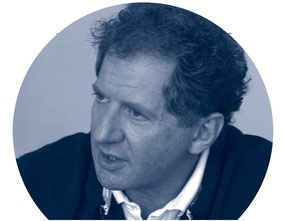
Of course, the big question this year is going to be whether Ferrari will be able to challenge Mercedes. I think last year it could have done better and Sebastian made a few mistakes – he was over the top on some occasions. He seems to be a driver who is brilliant leading from the front, but maybe not so much from the middle. A lot will obviously depend on the car that Ferrari produces.
Having said that, I think Lewis did a fantastic job last year. It was his best season ever – and if he does the same this year then I will almost be able to accept all those gold chains and earrings. Then again I remember my mum saying to me, ‘Look at those Beatles, with their long hair…’ so maybe I am being old-fashioned.
I will be keeping an eye on young Max Verstappen, too – people have compared me with him, but I think I crashed more often! He has everything you need, but he has to get it into his head that you don’t win if you don’t finish. And sometimes that means coming second. He’s an exciting driver to watch, though, and that is what the sport needs at moment.
The main change I would make for this season – and think they have done it at a couple of circuits – is to enforce track limits properly. I can’t stand it when drivers cut the corner and get no penalty. They need to have proper kerbs, or rough areas of track so that if you go off you pay a time penalty. And I would bring grid girls back. I don’t know what the world has come to, banning them. For me there is nothing wrong with seeing a beautiful woman and they bring glamour to the sport.
The authorities have to stand up to Ferrari, too: call the team’s bluff on its threat to walk away from the sport. Formula 1 is bigger than one team and if it gives in to Ferrari it will be a disaster.
DREAM TEAM I would have Hamilton with Verstappen in a Mercedes. I always think it is good to have one experienced driver and one hooligan. And I’d add Toto Wolff to keep control.
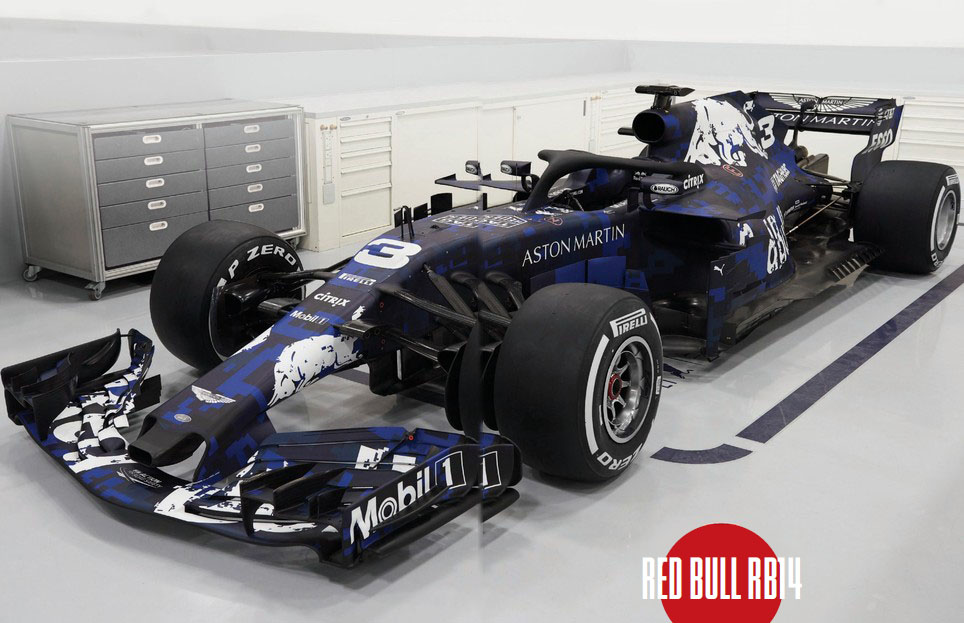

Isthe
three-enginerule going to hurt?
Ever since this formula was announced to take effect from 2014, it was always the plan to progressively reduce the number of power units per car per season until it was down to three. But there were moves afoot last year, initiated by Red Bull, to leave it at four. Furthermore, the engine manufacturers confirmed that the cost of the dyno hours in making the engines reliable at the required mileages more than outweighed the saving of one extra engine per car. A motion to keep it at four was proposed – but blocked by Ferrari. As the motion required unanimity, the requirement remains at three. Which begs the question: does Ferrari feel it has something up its sleeve that will give it a high-mileage advantage?
Whatever, the possibility of an engine grid penalty deciding the championship – which hasn’t really happened so far – surely becomes greater. Related to that, the grid penalty procedure has been simplified. Multiple theoretical drops (like Alonso’s 65 places at one race!) no longer count. Anything more than 15 puts you at the back – the order then decided by when the power unit changes were made.

Will Hamilton or Vettel join the greats if they win a fifth title?
Statistically this would put whichever of them achieved the feat in rarefied territory occupied only by Juan Manuel Fangio and Michael Schumacher. Three men in 68 years. It is of course a subjective view and highly dependent upon the value placed upon statistics rather than more circumstantial judgements. Allowing the stats to be the ultimate arbiter disqualifies such as Jim Clark or Ayrton Senna from this discussion.
What of the two critical career seasons – Ricciardo and Bottas?
It’s probably unfair to lump Ricciardo in with Bottas, in that he’s well established as a proven ace. But Daniel has a formidable challenge in halting team-mate Verstappen’s momentum if he’s to a) remain a hot candidate for Mercedes or Ferrari or b) not fall into a number two role at Red Bull.
Bottas averaged much further off Hamilton than did Ricciardo off Verstappen last year. He’s on a one-year contract, Ricciardo has one year remaining on his – the challenge to Bottas’s Mercedes drive could hardly be more explicit.
Will oil burn still be a thing?
Yes, but less so. Oil burning is a way of getting around the fuel-flow limit, giving the engine calories to burn in addition to those provided by the fuel. The regulations have been tightened for ’18 – active control valves in the crankcase that could be closed to increase pressure and force oil into the combustion chambers (thereby giving a Q3 or overtaking boost) have been banned. Furthermore, the oil usage limit has been reduced from 0.9 litres/100km to 0.6 litres/100km. Oil could still find its way into the combustion chambers through the crankcase pressure created off-throttle, but it will be less effective – and there will be less of it to burn. Mercedes and Ferrari were much further advanced with this technology in previous seasons than Renault or Honda. Some of that difference should therefore have been eradicated.
Is
thisthe
crucial career-definingseason for V
andoorne and Ocon?
They each came into F1 with red-hot reputations as the potential new ‘special ones’. Mercedes-backed Ocon partly justified that with his sometimes-controversial contests against Force India team-mate Sergio Pérez. Vandoorne struggled at McLaren with lack of mileage, shortage of equal parts and the colossus that is Fernando Alonso. To retain their career momentum, they need to show more convincingly against their team-mates this year.
Are
Leclercand Norris the new special ones?
F1 is such an unforgiving environment. Already Ocon and Vandoorne are fighting perception’s tide as the sport looks to the horizon for the next superstar – and standing where they were a year ago are Charles Leclerc and Lando Norris, the junior drivers of Ferrari and McLaren respectively. Both look outstanding and have the mark of ‘special’. F2 champ Leclerc races the Alfa-badged Sauber this year while F3 champion Norris will race in F2 in between duties for McLaren.
Can Kubica keep the miracle going?
Once it was Kubica who was ‘the special one’. But he is special, regardless of his current status. Just to have got himself back in consideration for an F1 race seat after the horrific injuries and seven-year absence is quite remarkable. He didn’t quite nail his Williams tests and so is the third driver, with up to eight Friday outings. If he can show in those sessions that he is anything like the pre-accident driver, the fairy tale might yet happen. There is a legion of fans behind him in this quest.
Will deletion of shark fins and upper T wings make any difference?
Nothing detectable. Between 0.1-0.15sec of lap time – and possibly a less snappy response on the limit as the fin’s wake no longer crosses an aerodynamically awkward transition. The change is just for aesthetics. Watch out for less visible lower body T-wings, like Williams ran a couple of times last year.
How ‘Alfa’ will Sauber be?
It will be very interesting to see if the Ferrari influence here increases beyond just lending the team its junior driver. It could be a great way for Ferrari to bring on new engineers as well as drivers and from Sauber’s viewpoint it could be a great foundation to long term security. On the other hand, it may all just be about the political power of two brands rather than one as Sergio Marchionne negotiates the terms for Ferrari’s commitment to the post-2020 F1. In which case, does it presage the 2019 Maserati-Haas team?

– A CHAMPION’S VIEW –
Alan Jones MBE
World champion 1980
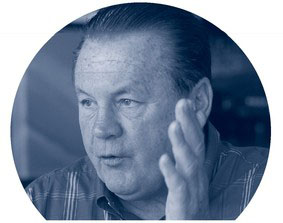
We need grid girls back – what a joke! If I could change one thing, it would be to reverse that decision. But on track, I’d be surprised if the status quo changed significantly. We’re hearing stories of Mercedes having 1000 horsepower and that’s not something I see Renault making up in the next couple of months. Ferrari you can never be quite sure about, tucked away over there out of the mainstream they’re always capable of springing a surprise – and they may very well come up with something that blows everyone away. But my money would still be on Mercedes.
So it’s a bit of a shame that we’re sitting here in February already sort of knowing who is going to be standing on the podium places; it’s not as unpredictable as it needs to be. It’s hard to see past Lewis Hamilton. He’s got Valtteri Bottas there with him but I was rather left cold last year by this ‘psychologically it was difficult and I went off the boil’. If you need motivating, don’t bloody do it! You have to believe in yourself and just get stuck in. If I was a team owner I’d be thinking, ‘Why do I need this?’
Red Bull’s an interesting one. I don’t see them as title contenders because I just cannot see Renault suddenly making up that power gap but I’m sure they will have one of the very best chassis and it’s an interesting time for Daniel Ricciardo. Red Bull has signed Max Verstappen ahead of him and they’re sort of saying ‘He’s our boy’. If I was Daniel in that situation I’d be thinking ‘Oh, is that right?’ and I’d be talking to Ferrari. I’d love to see him in a Ferrari. I’m a huge fan of Max, I love his do-or-die attitude but he maybe needs another year before he has Daniel’s consistency.
As for other changes, I worry about the halo. I hope I’m wrong but if a car gets upside down and they can’t get the driver out quickly because of that, then there could be a lot of egg on faces.
DREAMTEAM Mercedes car, Red Bull team boss
Christian Horner,driver
line-upHamilton and Ricciardo
Damon Hill OBE
World champion 1996
– ACHAMPION’ S VIEW –

Like many, I’m eagerly looking forward to seeing how McLaren will perform with Renault power. Will it be the step forward for which everybody is hoping – and how will Fernando Alonso rate his new engine? Assuming that he’s not already completely knackered by the time the season starts…
Ferrari was very strong for most of 2017 and I’d like to think it will be able to build on that – assuming, of course, that the team doesn’t withdraw from the sport before the first race!
I don’t see a great deal changing at Mercedes. Toto Wolff does a great job maintaining a consistently high standard – indeed the whole team is so efficient that it almost comes across as unexciting. Will Lewis come out all guns blazing? I know he’s had a few ups and downs off the track over the winter, but I don’t imagine that will distract him particularly.
I’ll be interested to see the different ways in which teams integrate the new halos, to see whether any of them finds a way of doing it advantageously, and I’m hoping the new tyre options will mix things up a bit, by creating a greater number of two-stop races. My biggest hope, though, is that we’ll see some good, hard racing. There was some very close competition last season, but I wouldn’t want a complete re-run: I hope the gap between the top three teams and the rest will come down.
Other things to watch? Max Verstappen seems to get stronger by the year and I note that Kimi Räikkönen has finally taken to using social media, so I’m looking forward to see what that yields. I’ll keep a close eye on Williams and Force India, too:
I wonder how long it will be before Paddy Lowe’s influence starts to take effect at the former – and Force India continues to be a cracking little racing team. And, on top of everything else, Fernando will be chasing his Le Mans dream. It’s not beyond the bounds of possibility that he’ll win, is it? That would leave him only the Indy 500 to conquer…
DREAM TEAM This could be a quick way to lose a few friends… There’s a case to be made for sticking the Mercedes engine in the back of a Red Bull, but I guess the simplest option would be to buy the whole Red Bull-Renault package. Christian Horner runs the whole operation very well, Adrian Newey is still a great designer and I think the Verstappen/Ricciardo pairing is probably the strongest in the paddock.

MERCEDES
First team entry 1954
Races entered 168
Wins 76 FLs 56
Poles 88 Driver titles 6
Position last year 1st
A bit like Manchester City on wheels, but more consistent. There have been 79 GPs since F1 entered its hybrid era – and Merc has won 63 (last season was its weakest, with ‘only’ 12 from 20).
Liberated from the destabilising consequences of former team-mate Nico Rosberg’s mind games, Lewis Hamilton was arguably at his most fluent in 2017. And he was already fairly handy…

LEWIS HAMILTON
First GP Australia 2007
Races entered 208
Titles 4 Wins 62
FLs 38 Poles 72
Position last year 1st

VALTTERI BOTTAS
First GP Australia 2013
Races entered 97
Titles 0 Wins 3
FLs 3 Poles 4
Position last year 3rd

FERRARI
First team entry 1950
Races entered 949
Wins 229 FLs 244
Poles 213 Driver titles 15
Position last year 2nd
Kimi Räikkönen was part of the last Ferrari team to win a world title (constructors, 2008), but wasn’t always a great deal of help – and is arguably even less so now… Sebastian Vettel’s attributes are a given, but the Scuderia might fare better if it employed two current top-liners and spent more time focusing on racing than threatening to withdraw from F1 if it doesn’t get its own way.

SEBASTIAN VETTEL
First GP USA 2007
Races entered 198
Titles 4 Wins 47
FLs 33
Poles 50
Position last year 2nd

KIMI RÄIKKÖNEN
First GP Australia 2001
Races entered 270
Titles 1
Wins 20
FLs 45
Poles 17
Position last year 4th

RED BULL
First team entry 2005
Races entered 244
Wins 55
FLs 54
Poles 58 Driver titles 4
Position last year 3rd
A team with Aston Martin backing, Renault engines – and a direct line to Honda’s performance progress via sibling Toro Rosso. Its relationship with Renault has stabilised, following marriage guidance counsel in 2015, but the possibilities are intriguing. Blessed with the best of all driver line-ups – and Vertappen is contracted until the end of 2020. The future is, indeed, orange.

DANIEL RICCIARDO
First GP Great Britain 2011
Races entered 129
Titles 0 Wins 5
FLs 9 Poles 1
Position last year 5th

MAX VERSTAPPEN
First GP Australia 2015
Races entered 60
Titles 0 Wins 3
FLs 2 Poles 0
Position last year 6th

FORCE INDIA
First team entry 2008
Races entered 191
Wins 0 FLs 5
Poles 1 Driver titles 0
Position last year 4th
Despite background uncertainty over the state of owner Vijay Mallya’s business empire, the team has remained a paragon of stability – for several seasons the best in the paddock, if measured on the basis of points scored per pound spent. Sergio Pérez has a masters degree in slaying giants; Esteban Ocon is a Mercedes junior who seems destined for promotion sooner rather than later.
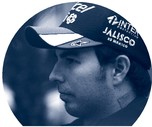
SERGIO PÉREZ
First GP Australia 2011
Races entered 134
Titles 0 Wins 0
FLs 4 Poles 0
Position last year 7th

ESTEBAN OCON
First GP Belgium 2016
Races entered 29
Titles 0 Wins 0
FLs 0 Poles 0
Position last year 8th

WILLIAMS
First team entry 1977
Races entered 690
Wins 114 FLs 133
Poles 128 Driver titles 7
Position last year 5th
Jones/Reutemann. Piquet/Mansell. Add to that Prost, Senna, a couple of Rosbergs, Hill, Montoya, Webber and a Villeneuve. A Sirotkin/Stroll cocktail doesn’t quite match the team’s proud heritage. Stroll looked good at times in 2017, but inconsistently so; Sirotkin showed promise in GP2, but wasn’t quite a match for Felipe Massa during testing last autumn. A tough year beckons.

SERGEY SIROTKIN
First GP n/a
Races entered 0
Titles 0 Wins 0
FLs 0 Poles 0
Position last year n/a

LANCE STROLL
First GP Australia 2017
Races entered 20
Titles 0 Wins 0
FLs 0 Poles 0
Position last year 12th

RENAULT
First team entry 1977
Races entered 341
Wins 35 FLs 31
Poles 51 Driver titles 2
Position last year 6th
In F1 terms, few manufacturers match Renault for boldness of spirit – given its track record with pioneering turbos and standard-setting V10s, not to mention a string of titles with Red Bull – but it dithered about returning to the front line in 2016 and progress since has been fairly sedate. Last year it reached the level of a half-decent Clio, but it hurriedly needs to unlock its inner 8 Gordini.

NICO HÜLKENBERG
First GP Bahrain 2010
Races entered 135
Titles 0 Wins 0
FLs 2 Poles 1
Position last year 10th

CARLOS SAINZ
First GP Australia 2015
Races entered 60
Titles 0 Wins 0
FLs 0 Poles 0
Position last year 9th
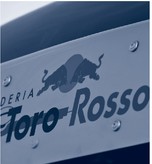
TORO ROSSO
First team entry 2006
Races entered 226
Wins 1 FLs 1
Poles 1 Driver titles 0
Position last year 7th
Effectively a guinea pig, in that it surrendered a supply of Renault engines to keep McLaren happy and received a crate of hitherto unloved Honda V6s in exchange. So this season is likely to be either a total disaster, because the things will persist in breaking, or else Honda will turn back into Honda and Gasly and Hartley – each a genuine talent – will be fighting in the top six. Possibly…

PIERRE GASLY
First GP Malaysia 2017
Races entered 5
Titles 0 Wins 0
FLs 0 Poles 0
Position last year 21st

BRENDON HARTLEY
First GP United States 2017
Races entered 4
Titles 0 Wins 0
FLs 0 Poles 0
Position last year 23rd

HAAS
First team entry 2016
Races entered 41
Wins 0 FLs 0
Poles 0 Driver titles 0
Position last year 8th
An object lesson in how to enter F1 at reduced (though still prohibitively expensive) cost, but also illustrative of the limitations those terms of engagement impose. Grosjean has long been saddled with cars some way south of his own potential; the frustration sometimes shows. Magnussen made a stellar F1 race debut (Australia 2014), but – oddly – has rarely looked that good since.

ROMAIN GROSJEAN
First GP Europe 2009
Races entered 122
Titles 0 Wins 0
FLs 1 Poles 0
Position last year 13th

KEVIN MAGNUSSEN
First GP Australia 2014
Races entered 60
Titles 0 Wins 0
FLs 0 Poles 0
Position last year 14th

McLAREN
First team entry 1966
Races entered 821
Wins 182 FLs 154
Poles 155 Driver titles 12
Position last year 9th
Has dispensed with Honda (builder of the fourth best engine on the grid) to tap into a supply from Renault (the third). Irrespective of performance gains, the switch was worthwhile as a catalyst in persuading prize asset Alonso to stay. Sophomore Vandoorne has a fine pedigree, so last season underlined just how potent a force Alonso (approaching his 17th year as an F1 racer) remains.

FERNANDO ALONSO
First GP Australia 2003
Races entered 290
Titles 2 Wins 32
FLs 23 Poles 22
Position last year 15th

STOFFEL VANDOORNE
First GP Bahrain 2016
Races entered 20
Titles 0 Wins 0
FLs 0 Poles 0
Position last year 16th

SAUBER
First team entry 1993
Races entered 352
Wins 1 FLs 5
Poles 1 Driver titles 0
Position last year 10th
New technical associate Alfa Romeo has an illustrious competition history, but hasn’t won a Grand Prix since Spain 1951 as a constructor, or Italy 1978 as an engine supplier. For now the name is little more than a large motif on the engine cover, but it symbolises increased technical collaboration with Ferrari – and heralds the arrival in F1 of the highly capable Charles Leclerc. Positives, both.

MARCUS ERICSSON
First GP Australia 2014
Races entered 76
Titles 0 Wins 0
FLs 0 Poles 0
Position last year 20th

CHARLES LECLERC
First GP n/a
Races entered 0
Titles 0 Wins 0
FLs 0 Poles 0
Position last year n/a










